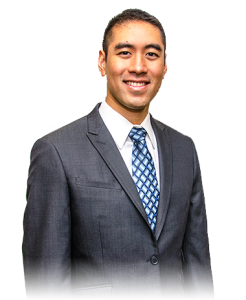Dr. Kaliq Chang with Atlantic Spine Center with tips on easy-access, highly effective self-treatment options
West Orange, NJ (PRWEB) October 03, 2017
October 2017 – With low back pain affecting 8 in 10 Americans at some point in their lives, many people wonder what their options are for treating the occasional back pain flare-up safely and effectively at home. Fortunately, a wide variety of home-based treatments can ease the ache when your back acts up, according to Kaliq Chang, MD, interventional pain management specialist with Atlantic Spine Center.
“Whether your back pain is caused by lifting something heavy, from bending the wrong way or because of an ongoing issue like osteoarthritis, most back pain is mild and occasional,” Dr. Chang explains. “For routine back pain, certain tried-and-true approaches can be done at home when you’re able, offering relief at a time that’s convenient for you.”
Home treatments for back pain
What remedies for back pain are accessible at home? Dr. Chang recommends trying these options:
- Pain relievers: Over-the-counter anti-inflammatory drugs such as ibuprofen (Advil, Motrin) and naproxen (Aleve, Naprosyn) target not only back pain itself, but inflammation often fueling the hurt. Check with your doctor of pharmacist about any potential drug interactions between these medications and others you may be taking.
- Exercise: It may seem counter-intuitive, but moving your body – within limits – actually helps ease back pain, Dr. Chang says. “You may not feel like moving if your back aches, but your body will thank you for making the effort,” he says. “Spines are meant to move.” Even everyday movement such as taking a walk or making the bed helps ease sore back muscles, and a light workout is certainly fine as long as you don’t overdo, he says.
- Stretching: Every 20 minutes or so, get up and bend lightly in various directions, carefully stretching out back muscles. “This gentle stretching helps strains and sprains to recover gradually, keeping muscles limber,” Dr. Chang says. “Some people find back pain relief by maintaining a regular stretching routine.”
- Apply cold: Cold compresses or ice are optimal in the first 24 to 48 hours after a minor injury that results in back pain, Dr. Chang says. “The cold will help dampen inflammation from developing as well as feel good,” he says. Apply cold packs in 20-minute segments.
- Apply heat: Warmth (hot water bottle, heating pad) not only feels good on a sore back, but helps relax muscles. Heat therapy should only be used on older injuries, not right after a fresh injury, Dr. Chang notes. Again, apply in 20-minute periods.
- Physical therapy: While not strictly a home-based treatment, physical therapy often ends up continuing at home. With a physical therapist’s advice and guidance, back pain patients become aware of the best exercises to do at home to improve back pain and keep it away, Dr. Chang says.
If your back pain doesn’t subside after a week or so of home treatments – or becomes more severe, hurting even when you’re at rest – it’s time to call a doctor, Dr. Chang advises. “Immediate medical attention is necessary if you have weakness or numbness in your legs or ‘saddle area’ of your crotch, or if you have trouble standing or walking,” he adds. “Forget home-based treatments at that point and seek expert opinion.”
Prevention starts at home, too
Since prevention is always the best treatment, avoiding back pain can start at home as well, Dr. Chang notes. These measures can stop back pain from developing in the first place:
- Watch your weight: Being overweight puts excess strain on the spine and back muscles.
- Quit smoking: Smoking ups the odds of bone problems in the spine and suffering low back pain.
- Wear low heels: Heels higher than 1 inch can create unstable posture, increasing pressure on the lower spine.
- Pay attention to posture: Many of us slump without noticing, but this can make it harder for your back to support your weight, Dr. Chang says. Keep your back erect when walking or sitting, and don’t bend from the waist while lifting heavy objects.
- Ergonomics count: Design your desk and workspace to avoid needing to hunch forward while using your computer or reach for your mouse, Dr. Chang advises. “Use a desk chair that’s supportive of the lower back and allows you to keep your feet planted on the floor,” he adds.
- Exercise your core: Our core muscles support the lower back and abdomen, Dr. Chang says, and keeping them strong helps combat lower back pain. “Proper posture and spine alignment is enabled by a strong core,” he says. “Exercises such as those in Pilates classes help firm and tone these key muscles.”
Atlantic Spine Center is a nationally recognized leader for endoscopic spine surgery with several locations in NJ and NYC. http://www.atlanticspinecenter.com, http://www.atlanticspinecenter.nyc
Kaliq Chang, MD, is an interventional pain management specialist board-certified in anesthesiology at Atlantic Spine Center.

